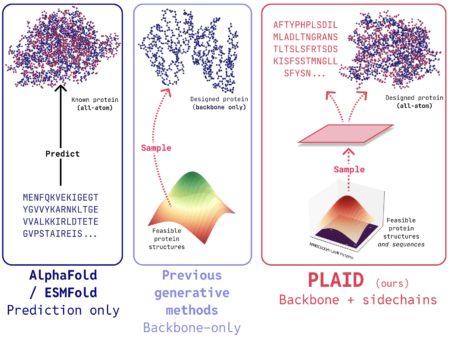
It happened to me one afternoon when I was sipping chai and pondering the future – you know, the way one does after reading too many articles about AI replacing jobs and chatbots sounding eerily like our long-lost aunties. That’s when it hit me: we don’t just need new technologies. We need new philosophies.
In my pursuit of progress – not just for business, but for humanity – I stumbled upon a mantra that shook me to my core. A fusion of Sanskrit serenity and silicon circuitry:
“Buddhir-dattu yantrabhyah, seva sarvebhyah. Vikasāya buddhih, lokakalyāṇāya kāryam.”
Translation: “Let intelligence be given to machines, and service to all. Let wisdom be for progress, and actions for the good of the world.”
Say it out loud. Let it ring in your mind. It’s more than just poetic – it’s prescriptive. This is the AI mantra of our time.
Why a Mantra? And Why Now?
The world’s shifting fast. Automation is taking over more tasks than we can keep track of. And while some cheer and others panic, few pause to ask: What are we really building toward?
We’re in this liminal space between human-led and machine-augmented futures. And in that space, purpose matters more than productivity. That’s why this mantra resonates. It’s a compass. It points not to profits alone, but to progress with empathy.
You see, I’ve read Carnegie. I know the power of belief, of repeating something meaningful until it becomes part of your DNA. This mantra, in many ways, is our modern-day affirmation for responsible innovation.
Breaking It Down: Line by Line
Let’s unpack the Sanskrit:
“Buddhir-dattu yantrabhyah” – Let intelligence be given to machines.
We’re already doing this. Neural networks, deep learning models, self-driving cars – all guided by human-designed intelligence. But what if we approached it with reverence? With a sense of stewardship? Not as overlords, but as mentors?
“Seva sarvebhyah” – And service to all.
This one stops me every time. What good is intelligence, artificial or not, if it doesn’t serve everyone? Not just the few. Not just the shareholders. But the underprivileged, the forgotten, the silent users who never click but always feel the effects of what we build.
“Vikasāya buddhih” – Let wisdom be for progress.
Notice it doesn’t say speed. It says wisdom. There’s a reason for that. In the race for tech supremacy, we sometimes forget that progress without wisdom is just well-funded chaos.
“Lokakalyāṇāya kāryam” – And actions for the good of the world.
Isn’t that the dream? AI that doesn’t just optimize ads or predict purchases, but helps clean oceans, cure disease, uplift education, and build bridges – literally and metaphorically.
Let Me Be Honest: I Was Skeptical Too
I used to scoff at phrases like “AI for good.” They felt like marketing. But over time, I’ve come to realize something that Carnegie himself would approve of: people don’t want cold logic – they want connection.
And machines? Well, they can learn patterns. But it’s up to us to teach them values.
This mantra, to me, is a starting point for that. A declaration that while we build machines, we must also build meaning.
How This Mantra Can Shape Teams and Tech?
Picture this: a dev team that starts their sprint planning not just with KPIs and user stories, but with a whisper of this chant. Not to turn tech into religion, but to infuse it with intention.
Imagine:
- Product managers asking: Will this feature serve all?
- Engineers wondering: Is this wisdom, or just data?
- Leaders pausing to reflect: Are our actions good for the world?
It sounds idealistic. But isn’t idealism what led to every great leap?
A New Kind of Intelligence
We talk about Artificial Intelligence. But what about Authentic Intelligence?
The kind that balances computation with compassion. That sees ethics not as compliance, but as character.
I believe this mantra reminds us that real intelligence – whether natural or artificial – must be rooted in service.
How You Can Bring This Mantra to Life?
Alright, now for the real talk. You’ve read the words. You get the vibe. Here’s how to act on it:
- Start your meetings with a value check. Not just “What are we building?” but “Why are we building it?”
- Teach your teams this mantra. Let it echo in discussions and code comments alike.
- Create AI with inclusion baked in. Test with diverse datasets. Involve diverse voices.
- Measure success beyond metrics. Look at smiles, testimonials, lives improved.
- Repeat the mantra daily. Let it be your north star.
What Happens Next?
I can’t predict the future. But I know this: if we recite this mantra not just with mouths but with minds and actions, the future’s going to feel less like a Black Mirror episode and more like a collective awakening.
So say it with me, friend:
“Buddhir-dattu yantrabhyah, seva sarvebhyah. Vikasāya buddhih, lokakalyāṇāya kāryam.”
And mean every syllable.
FAQ
Q: Is this mantra religious?
No. While it’s written in Sanskrit, it’s philosophical, not spiritual. It blends ancient language with modern intention.
Q: Can I use this in my workplace?
Absolutely. Many teams use mission statements or affirmations. This can serve as your AI ethics compass.
Q: Is it copyrighted?
Not at all. Spread it. Teach it. Frame it. Just live it.
Q: What if my team doesn’t understand Sanskrit?
That’s okay. Start with the meaning. Let the beauty of the words follow.
Q: Where can I learn more about building responsible AI?
Look into platforms like Partnership on AI, Ethical AI by Google, and OpenAI’s Charter for more context.
And remember: It’s not just what AI becomes. It’s what we become through AI. Jai Kr̥trimabuddhiḥ!
Source: Read MoreÂ


